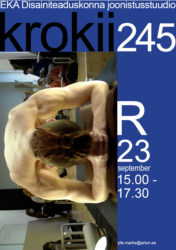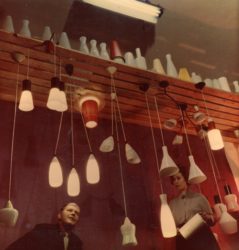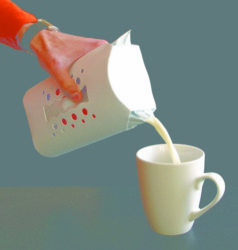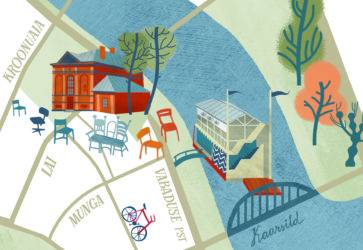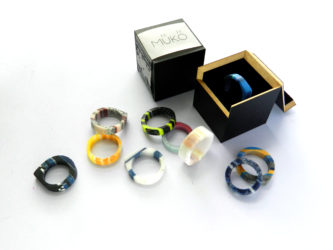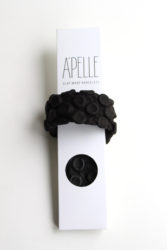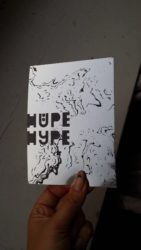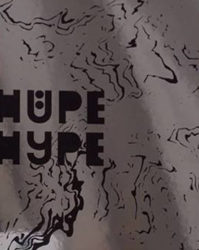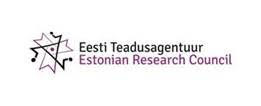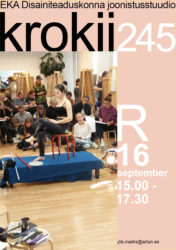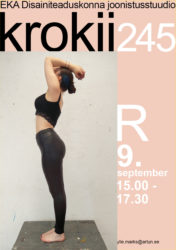Academic Affairs OfficeAccessory DesignAnimationArchitecture and Urban DesignArt EducationCenter for Flat TechnologiesCeramicsCultural Heritage and ConservationDepartmentsDesign and Technology FuturesDoctoral SchoolDrawingFacilities and WorkshopsFaculty of ArchitectureFaculty of Art and CultureFaculty of DesignFaculty of Fine ArtsFashion DesignFinancial DepartmentGalleryGlass ArtGraphic ArtGraphic DesignInstallation and SculptureInstitute of Art History and Visual CultureInternational OfficeIT OfficeJewellery and BlacksmithingLandscape ArchitectureLibraryLinnaehitus @enMaking SpaceNew MediaOffice of the RectorateOpen AcademyPaintingPerforming ArtsPhotographyProduct DesignRectorateResearch and Development OfficeScenographySupport UnitsTextile DesignUncategorizedUrban PlanningUrban Studies
Croquis.
23.09.2016
Croquis.
Disainiteaduskond
Croquis.
Friday 23 September, 2016
Disainiteaduskond
29.09.2016 — 01.01.2017
Exhibition “Encounter Estonian Design. An Introduction”
Exhibition “Encounter Estonian Design. An Introduction”
Exhibited designs:
Anna von Maydell / Atelier für Kunstgewerbe, A.M. Luther furniture factory, J. Lorup glass factory, E. Taska workshop, Tarbeklaas, Standard, Estoplast, Kunst ja Kodu, Tallinna Ehituskeraamikatehas, Kunstitoodete Kombinaat, Punane Ret, Salvo, Ruum ja Vorm, Martin Pärn, Tarmo Luisk, Veiko Liis, Jaanus Orgusaar, Kärt Ojavee, Raili Keiv, Keha3, HUUM, Iseasi, Scheckmann, Kärt Põldmann, Marit Ilison, Warm North, Johanna Tammsalu, Monika Järg, Anton Koovit, Kelpman Textile, etc.
Curator: Kai Lobjakas, Estonian Museum of Applied Art and Design
On 29 September, an overview of the history of Estonian design curated by the Estonian Museum of Applied Art and Design will be opened in Tartmus. It concentrates on the most important aspects and trends in Estonian design. For Tartmus, this is the first overview of Estonian design. “Encounter Estonian Design. An Introduction” will remain open until 1 January 2017.
Over the last decades the various aspects and layers of Estonian design have been thoroughly researched. Design, like most other labels and ideas with a prolonged history, has been redefined to reflect the needs of any era. The rise of new meanings, however, has meant that understanding design has become harder and some of the newer definitions might not be compatible with the older ones. To some, “design” might mean a specific technical detail or an especially valuable chair, but others might define it as life altering innovation. This raises the questions: is design an object or a service, visible or invisible, a product, a unique item or an idea?
The spatial and temporal borders have also been changing. The history of design either begins with human civilization, with the industrialization period of the end of the 18th century, or with the years following the Second World War. All of these definitions, however, see design as a means of change – either for a group or an individual. It makes life easier, safer and happier.
Although Estonians have participated in the creation of many important design solutions – like the spy camera Minox or the communication platform Skype – our design has been historically associated with light industry and everyday life.
The Estonian Museum of Applied Art and Design has used the last 15 years to map the local design landscape and to place its history into context. With new information, the idea of Estonian cultural heritage has grown. The present exhibition is based on this research and connects the history of design with contemporary ideas. Using a selection of examples that have been considered the most prominent of their time, it contextualizes the Estonian design landscape and reveals the various aspects that are its most distinguishing characteristics.
An educational programme for various age groups will accompany the exhibition. More information at www.tartmus.ee
Exhibition graphic design: Indrek Sirkel
Exhibition design: Edina Dufala-Pärn. Containing exhibition modules by 3+1 designed for the 2006 Tallinn Applied Arts Triennial.
Exhibition team: Nele Ambos, Rael Artel, Karl Feigenbaum, Joanna Hoffmann, Margus Joonsalu, Sten Ojavee, Julia Polujanenkova, Kristel Sibul, Peeter Talvistu, Ago Teedema
Supporters: Cultural Endowment of Estonia, architectural office 3+1
Thanks: UBS Repro, Estonian Film Archives, AS Põltsamaa Felix
Additional information on the exhibition’s Facebook page: https://www.facebook.
Additional information:
Joanna Hoffmann
Contemporary art curator
Phone: 58817802
Email: joanna@tartmus.ee
TARTU ART MUSEUM
Raekoja plats 18, Tartu
Wed, Fri–Sun 11–18 / Thu 11–21
Posted by Solveig Jahnke — Permalink
Exhibition “Encounter Estonian Design. An Introduction”
Thursday 29 September, 2016 — Sunday 01 January, 2017
Exhibition “Encounter Estonian Design. An Introduction”
Exhibited designs:
Anna von Maydell / Atelier für Kunstgewerbe, A.M. Luther furniture factory, J. Lorup glass factory, E. Taska workshop, Tarbeklaas, Standard, Estoplast, Kunst ja Kodu, Tallinna Ehituskeraamikatehas, Kunstitoodete Kombinaat, Punane Ret, Salvo, Ruum ja Vorm, Martin Pärn, Tarmo Luisk, Veiko Liis, Jaanus Orgusaar, Kärt Ojavee, Raili Keiv, Keha3, HUUM, Iseasi, Scheckmann, Kärt Põldmann, Marit Ilison, Warm North, Johanna Tammsalu, Monika Järg, Anton Koovit, Kelpman Textile, etc.
Curator: Kai Lobjakas, Estonian Museum of Applied Art and Design
On 29 September, an overview of the history of Estonian design curated by the Estonian Museum of Applied Art and Design will be opened in Tartmus. It concentrates on the most important aspects and trends in Estonian design. For Tartmus, this is the first overview of Estonian design. “Encounter Estonian Design. An Introduction” will remain open until 1 January 2017.
Over the last decades the various aspects and layers of Estonian design have been thoroughly researched. Design, like most other labels and ideas with a prolonged history, has been redefined to reflect the needs of any era. The rise of new meanings, however, has meant that understanding design has become harder and some of the newer definitions might not be compatible with the older ones. To some, “design” might mean a specific technical detail or an especially valuable chair, but others might define it as life altering innovation. This raises the questions: is design an object or a service, visible or invisible, a product, a unique item or an idea?
The spatial and temporal borders have also been changing. The history of design either begins with human civilization, with the industrialization period of the end of the 18th century, or with the years following the Second World War. All of these definitions, however, see design as a means of change – either for a group or an individual. It makes life easier, safer and happier.
Although Estonians have participated in the creation of many important design solutions – like the spy camera Minox or the communication platform Skype – our design has been historically associated with light industry and everyday life.
The Estonian Museum of Applied Art and Design has used the last 15 years to map the local design landscape and to place its history into context. With new information, the idea of Estonian cultural heritage has grown. The present exhibition is based on this research and connects the history of design with contemporary ideas. Using a selection of examples that have been considered the most prominent of their time, it contextualizes the Estonian design landscape and reveals the various aspects that are its most distinguishing characteristics.
An educational programme for various age groups will accompany the exhibition. More information at www.tartmus.ee
Exhibition graphic design: Indrek Sirkel
Exhibition design: Edina Dufala-Pärn. Containing exhibition modules by 3+1 designed for the 2006 Tallinn Applied Arts Triennial.
Exhibition team: Nele Ambos, Rael Artel, Karl Feigenbaum, Joanna Hoffmann, Margus Joonsalu, Sten Ojavee, Julia Polujanenkova, Kristel Sibul, Peeter Talvistu, Ago Teedema
Supporters: Cultural Endowment of Estonia, architectural office 3+1
Thanks: UBS Repro, Estonian Film Archives, AS Põltsamaa Felix
Additional information on the exhibition’s Facebook page: https://www.facebook.
Additional information:
Joanna Hoffmann
Contemporary art curator
Phone: 58817802
Email: joanna@tartmus.ee
TARTU ART MUSEUM
Raekoja plats 18, Tartu
Wed, Fri–Sun 11–18 / Thu 11–21
Posted by Solveig Jahnke — Permalink
22.09.2016 — 30.10.2016
Pseudo 22 September – 30 October at the Contemporary Art Museum of Estonia
Pseudo
22 September – 30 October at the Contemporary Art Museum of Estonia (EKKM)
Vernissage on Wednesday 21 September at 6pm
Artists: Dénes Farkas & Taavi Talve, Dora García, Flo Kasearu, Jevgeni Zolotko, Kristiina Hansen & Sigrid Viir, Neeme Külm
There is no beginning. I was begotten – just like you – and since then I’ve been lumbered.
Émile Ajar > Paul Pavlovich > Romain Gary, Pseudo
These are the first lines from a novel titled Pseudo (translated: Hocus Bogus), written in 1976 by French author Émile Ajar, drawing only modest attention during the time. This novel could be taken as pseudo-autobiographical writing by Émile Ajar. Pseudo was his third work, which was published a year after prix Goncourt winning The Life Before Us. Émile Ajar was Romain Gary’s pseudonym. For Gary, this was the second time to win a prize that could not be won twice. With increased media attention Gary asked his cousin Paul Pavlowitch to impersonate Émile Ajar. Pseudo is a novel written by Romain Gary, impersonating Paul Pavlowitch, in order to prove that Paul Pavlowitch was Émile Ajar, and it worked, but the exhibition does not speak of that.
This exhibition does not speak the language we understand, similarly to the protagonist of the novel Pseudo, who tries to avoid any connection to the context. The exhibition does not speak English, “but not well enough”. We still comprehend something, or at least apprehend, even if there is no speaking taking place.
Of course straightforwardness does not exist here. There is nothing given, nothing stated, except for this very thing here. But here one can sense universality, topicality as well as obscurity; the construction of parallel realities, which might seem more real than everyday or identically lukewarm; stagings, portraits and renditions caught in between graveness and absurdity, that are playful and rigorously composed at the same time; things that do not accommodate, that are searching for an exit, that wish to detach themselves, that would fit elsewhere; an exhibition that is pseudo, and tries to be a whole, while at least consisting of wholes.
Curator: Marten Esko
Graphic design: Allan Appelberg
Supporters: Cultural Endowment of Estonia, Estonian Ministry of Culture, Draka Keila Cables AS
More info:
www.ekkm.ee
info@ekkm.ee
www.facebook.com/ekkmtallinn/
Posted by Solveig Jahnke — Permalink
Pseudo 22 September – 30 October at the Contemporary Art Museum of Estonia
Thursday 22 September, 2016 — Sunday 30 October, 2016
Pseudo
22 September – 30 October at the Contemporary Art Museum of Estonia (EKKM)
Vernissage on Wednesday 21 September at 6pm
Artists: Dénes Farkas & Taavi Talve, Dora García, Flo Kasearu, Jevgeni Zolotko, Kristiina Hansen & Sigrid Viir, Neeme Külm
There is no beginning. I was begotten – just like you – and since then I’ve been lumbered.
Émile Ajar > Paul Pavlovich > Romain Gary, Pseudo
These are the first lines from a novel titled Pseudo (translated: Hocus Bogus), written in 1976 by French author Émile Ajar, drawing only modest attention during the time. This novel could be taken as pseudo-autobiographical writing by Émile Ajar. Pseudo was his third work, which was published a year after prix Goncourt winning The Life Before Us. Émile Ajar was Romain Gary’s pseudonym. For Gary, this was the second time to win a prize that could not be won twice. With increased media attention Gary asked his cousin Paul Pavlowitch to impersonate Émile Ajar. Pseudo is a novel written by Romain Gary, impersonating Paul Pavlowitch, in order to prove that Paul Pavlowitch was Émile Ajar, and it worked, but the exhibition does not speak of that.
This exhibition does not speak the language we understand, similarly to the protagonist of the novel Pseudo, who tries to avoid any connection to the context. The exhibition does not speak English, “but not well enough”. We still comprehend something, or at least apprehend, even if there is no speaking taking place.
Of course straightforwardness does not exist here. There is nothing given, nothing stated, except for this very thing here. But here one can sense universality, topicality as well as obscurity; the construction of parallel realities, which might seem more real than everyday or identically lukewarm; stagings, portraits and renditions caught in between graveness and absurdity, that are playful and rigorously composed at the same time; things that do not accommodate, that are searching for an exit, that wish to detach themselves, that would fit elsewhere; an exhibition that is pseudo, and tries to be a whole, while at least consisting of wholes.
Curator: Marten Esko
Graphic design: Allan Appelberg
Supporters: Cultural Endowment of Estonia, Estonian Ministry of Culture, Draka Keila Cables AS
More info:
www.ekkm.ee
info@ekkm.ee
www.facebook.com/ekkmtallinn/
Posted by Solveig Jahnke — Permalink
29.09.2016 — 04.12.2016
Architectural exhibition “Who Creates the City?“
On 29 September, the exhibition “Who Creates the City?” asks who has shaped the urban environment of Tartu, for what reasons and with what resources and results. Three galleries introduce the activities and spatial outcomes of the city government, the developers and the citizen activists. The fourth contains contemporary visual and textual works representing the notable locations of Tartu and shaping the face of the town. The exhibition is curated by the architectural historian Pille Epner and co-curated by architect Kaja Pae. “Who Creates the City?” will remain open until 4 December.
The aim of the exhibition is to look at the town from the viewpoint of different participating groups. The intelligent development of urban environment is determined by the visions of various participants, their ability to carry out dialogues and to achieve co-operation. We can create a better city together by understanding what possibilities and means for developing the urban space are held by the city government, the real estate developers and the citizens themselves.
The exhibition offers a map for an active citizen, an overview of designs for public spaces and shows architectural objects that understand their context. Glimpses of the mysterious edges of Tartu that shape the atmosphere in the town in their own hidden ways can also be found. In addition, 15 interviews representing various relevant groups are displayed, including architects and officials who plan the town, real estate developers and citizen activists.
According to the curators, the exhibition concentrates on the most important processes and initiatives that shape the urban environment of Tartu. “Over the last years, a heated discussion has been carried out asking critical questions about a high-quality urban environment that would follow the historic traditions of Tartu. On the one hand, it is a sign that a more thorough approach to urban planning is needed, on the other it also suggests that the different parties are prepared to hold dialogues.”
The exhibition is accompanied by a map for an urban connoisseur that introduces the contemporary architecture of Tartu and shows the ways off the beaten path.
Posted by Solveig Jahnke — Permalink
Architectural exhibition “Who Creates the City?“
Thursday 29 September, 2016 — Sunday 04 December, 2016
On 29 September, the exhibition “Who Creates the City?” asks who has shaped the urban environment of Tartu, for what reasons and with what resources and results. Three galleries introduce the activities and spatial outcomes of the city government, the developers and the citizen activists. The fourth contains contemporary visual and textual works representing the notable locations of Tartu and shaping the face of the town. The exhibition is curated by the architectural historian Pille Epner and co-curated by architect Kaja Pae. “Who Creates the City?” will remain open until 4 December.
The aim of the exhibition is to look at the town from the viewpoint of different participating groups. The intelligent development of urban environment is determined by the visions of various participants, their ability to carry out dialogues and to achieve co-operation. We can create a better city together by understanding what possibilities and means for developing the urban space are held by the city government, the real estate developers and the citizens themselves.
The exhibition offers a map for an active citizen, an overview of designs for public spaces and shows architectural objects that understand their context. Glimpses of the mysterious edges of Tartu that shape the atmosphere in the town in their own hidden ways can also be found. In addition, 15 interviews representing various relevant groups are displayed, including architects and officials who plan the town, real estate developers and citizen activists.
According to the curators, the exhibition concentrates on the most important processes and initiatives that shape the urban environment of Tartu. “Over the last years, a heated discussion has been carried out asking critical questions about a high-quality urban environment that would follow the historic traditions of Tartu. On the one hand, it is a sign that a more thorough approach to urban planning is needed, on the other it also suggests that the different parties are prepared to hold dialogues.”
The exhibition is accompanied by a map for an urban connoisseur that introduces the contemporary architecture of Tartu and shows the ways off the beaten path.
Posted by Solveig Jahnke — Permalink
13.09.2016 — 18.09.2016
Accessories exhibition HÜPE / HYPE in DISAINIÖÖ
Faculty of Design
Estonian Academy of Arts in collaboration with TALI design shop presents:
Accessories exhibition HÜPE / HYPE in DISAINIÖÖ (SAUNA 6, Tallinn)
Young designers from various disciplines from Faculty of Design tightened it`s muscles for a jump through creativity.
Exciting materials + unexpected solutions + fresh ideas = three month course to create small series accessories for TALI design shop.
This course is a push to realize your ideas, implement the vision and create a product that could afterward take a jump on its own.
Designers: Aivar Reidla, Denizay Apusoglu, Federica Cogliandro, Hannes Tõnuri, Kadi Adrikorn, Kadi Kibbermann, Kristina Puz, Maarja Roolaht, Maria Garcia Castillejo, Moonika Kase, Piret Mägi, Toomas Mäelt, Viktorija Domarkaite.
Supervised by Helene Vetik & Tanel Veenre
Consulted by Dan Mikkin, Karl Saluveer, Reet Aus
Supported by Faculty of Design, Estonian Academy of Arts
Exhibition is open:
Tu 13.09 at 15-18
We 14.09 at 12-18
Th 15.09 at 12-20
Fr 16.09 at 12-20
Sa 17.09 at 12-20
Su 18.09 at 12-18
Tu 13.09 at 15-18
We 14.09 at 12-18
Th 15.09 at 12-20
Fr 16.09 at 12-20
Sa 17.09 at 12-20
Su 18.09 at 12-18
Official opening night HELIODISAIN 15.09 / 20:00 – 23:00 o’clock
More info
https://www.facebook.com/Acces
https://www.facebook.com/event
Sponsors: Estonian Academy of Arts, Disainiöö, Tali, Tikkurila, GIF Visuals
Exhibition organized by Viktorija Domarkaite
Posted by Solveig Jahnke — Permalink
Accessories exhibition HÜPE / HYPE in DISAINIÖÖ
Tuesday 13 September, 2016 — Sunday 18 September, 2016
Faculty of Design
Estonian Academy of Arts in collaboration with TALI design shop presents:
Accessories exhibition HÜPE / HYPE in DISAINIÖÖ (SAUNA 6, Tallinn)
Young designers from various disciplines from Faculty of Design tightened it`s muscles for a jump through creativity.
Exciting materials + unexpected solutions + fresh ideas = three month course to create small series accessories for TALI design shop.
This course is a push to realize your ideas, implement the vision and create a product that could afterward take a jump on its own.
Designers: Aivar Reidla, Denizay Apusoglu, Federica Cogliandro, Hannes Tõnuri, Kadi Adrikorn, Kadi Kibbermann, Kristina Puz, Maarja Roolaht, Maria Garcia Castillejo, Moonika Kase, Piret Mägi, Toomas Mäelt, Viktorija Domarkaite.
Supervised by Helene Vetik & Tanel Veenre
Consulted by Dan Mikkin, Karl Saluveer, Reet Aus
Supported by Faculty of Design, Estonian Academy of Arts
Exhibition is open:
Tu 13.09 at 15-18
We 14.09 at 12-18
Th 15.09 at 12-20
Fr 16.09 at 12-20
Sa 17.09 at 12-20
Su 18.09 at 12-18
Tu 13.09 at 15-18
We 14.09 at 12-18
Th 15.09 at 12-20
Fr 16.09 at 12-20
Sa 17.09 at 12-20
Su 18.09 at 12-18
Official opening night HELIODISAIN 15.09 / 20:00 – 23:00 o’clock
More info
https://www.facebook.com/Acces
https://www.facebook.com/event
Sponsors: Estonian Academy of Arts, Disainiöö, Tali, Tikkurila, GIF Visuals
Exhibition organized by Viktorija Domarkaite
Posted by Solveig Jahnke — Permalink
09.09.2016 — 17.10.2016
The national contest for university students is now open!
Estonian Research Council, Estonian Academy of Sciences and Estonian Ministry of Education and Research call upon participating in the national contest for university students. The contest is open for all students studying in Estonia, including foreign students and Estonian citizens studying abroad.
Papers can be submitted on all university levels (applied higher education and bachelor’s studies, master’s studies, doctoral studies) until 17 October 2016!
Starting this year the award fund of the national contest is larger, over 67 000 euros, as a similar contest of the Academy of Sciences has been merged into the national contest.
The national awards are as follows:
- students following bachelor’s or professional degree programmes: 1st prize 960 euros, 2nd prize 650 euros, 3rd prize 320 euros;
- master’s students: 1st prize 1600 euros, 2nd prize 1300 euros, 3rd prize 700 euros;
- doctoral students: 1st prize 1600 euros, 2nd prize 1300 euros, 3rd prize 700 euros;
The special prizes conferred by President of the Estonian Academy of Sciences are as follows:
- students following bachelor’s or professional degree programmes: special prize for auspicious scintillating sparks – π×250=785.40 euros;
- doctoral or master’s students: 1st special prize for the most elegant student research paper – π×1000=3141.59euros; 2nd special prize for an unconventional student research paper – π×500=1570.80 euros.
The aim of the national contest for university students is to promote research among university students, stimulate them to be more active and to acknowledge students who have achieved outstanding results.
Website of the national contest
Contacts:
Sirli Taniloo
Ph +372 731 7347
mobile +372 526 0562
e-mail sirli.taniloo@etag.ee
Terje Tuisk
mobile +372 511 0356
e-mail terje.tuisk@etag.ee
Posted by Solveig Jahnke — Permalink
The national contest for university students is now open!
Friday 09 September, 2016 — Monday 17 October, 2016
Estonian Research Council, Estonian Academy of Sciences and Estonian Ministry of Education and Research call upon participating in the national contest for university students. The contest is open for all students studying in Estonia, including foreign students and Estonian citizens studying abroad.
Papers can be submitted on all university levels (applied higher education and bachelor’s studies, master’s studies, doctoral studies) until 17 October 2016!
Starting this year the award fund of the national contest is larger, over 67 000 euros, as a similar contest of the Academy of Sciences has been merged into the national contest.
The national awards are as follows:
- students following bachelor’s or professional degree programmes: 1st prize 960 euros, 2nd prize 650 euros, 3rd prize 320 euros;
- master’s students: 1st prize 1600 euros, 2nd prize 1300 euros, 3rd prize 700 euros;
- doctoral students: 1st prize 1600 euros, 2nd prize 1300 euros, 3rd prize 700 euros;
The special prizes conferred by President of the Estonian Academy of Sciences are as follows:
- students following bachelor’s or professional degree programmes: special prize for auspicious scintillating sparks – π×250=785.40 euros;
- doctoral or master’s students: 1st special prize for the most elegant student research paper – π×1000=3141.59euros; 2nd special prize for an unconventional student research paper – π×500=1570.80 euros.
The aim of the national contest for university students is to promote research among university students, stimulate them to be more active and to acknowledge students who have achieved outstanding results.
Website of the national contest
Contacts:
Sirli Taniloo
Ph +372 731 7347
mobile +372 526 0562
e-mail sirli.taniloo@etag.ee
Terje Tuisk
mobile +372 511 0356
e-mail terje.tuisk@etag.ee
Posted by Solveig Jahnke — Permalink
16.09.2016
Croquis.
Disainiteaduskond
Croquis.
Friday 16 September, 2016
Disainiteaduskond
09.09.2016
Croquis.
Disainiteaduskond
Croquis.
Friday 09 September, 2016
Disainiteaduskond
07.09.2016 — 08.09.2016
The EAA School Supplies’ Sale!
The EAA School Supplies’ Sale will take place on 7-8 September from 11am – 4pm at the Estonia pst 7 foyer. The Skizze art supplies’ store will be selling high quality art supplies for drawing, painting, sketching etc. They will have a 10% discount on all products and distribute coupons for their store.
We will also be selling books from the EAA Press and T-shirts and other EAA gift items. Come by and have a chat!
Please bring cash!
Posted by Solveig Jahnke — Permalink
The EAA School Supplies’ Sale!
Wednesday 07 September, 2016 — Thursday 08 September, 2016
The EAA School Supplies’ Sale will take place on 7-8 September from 11am – 4pm at the Estonia pst 7 foyer. The Skizze art supplies’ store will be selling high quality art supplies for drawing, painting, sketching etc. They will have a 10% discount on all products and distribute coupons for their store.
We will also be selling books from the EAA Press and T-shirts and other EAA gift items. Come by and have a chat!
Please bring cash!
Posted by Solveig Jahnke — Permalink
22.08.2016 — 13.09.2016
Call for Applications: Gallerist Master Course 2016 Estonian Contemporary Art Development Center (ECADC)
Faculty of Art and Culture
September 21 – October 2, 2016
Application Deadline: September 12, 2016
Tallinn, Estonia
www.ecadc.ee
This fall the Estonian Contemporary Art Development Center (ECADC) is presenting the third edition of its Gallerist Master Course in Tallinn, Estonia, offering training for both practicing and emerging gallerists.
The course is designed to introduce students to the dynamics of the art world infrastructure. Classes will discuss the various segments of today’s global art market (Alessia Zorloni, IULM); artist representation and the day-to-day operations of a commercial gallery (Sol Pochat, HILO Gallery); art journalism and writing for social media (Andrew M. Goldstein, Artspace, Phaidon); as well as more recent developments in exhibition-making and curating (Fatos Üstek, independent curator, fig2).
This eight-day intensive course will accept MA students with a demonstrated interest and/or experience in contemporary art as well as practicing gallerists, arts and culture managers, and artists. The entire course will be conducted in English.
September 21 – 22
Sol Pochat
Case Study of HILO Gallery
Established in 2015, HILO Galeria is an emerging gallery in Buenos Aires, Argentina, with a special focus on site- and context-specific artistic and curatorial practices. The seminar will take the form of a case study on how to develop a sustainable gallery model representing emerging artists.
September 23 – 24
Alessia Zorloni
Introduction to the International Art Market
The art market, like most major business sectors in the 21st century, operates in a global environment and is complex, dynamic, and often seemingly irrational. This seminar will give students an understanding of the various segments of today’s ever-evolving international art market.
September 29 – 30
Fatos Üstek
Introduction to Contemporary Curatorial Practices
The seminar will address curatorial positions and the significant role they play in today’s arts ecology. Visiting a plethora of voices that are shaping the practice of contemporary curating, it will concentrate on different modalities and sensitivities that a curator employs in order to engage with art, and, more significantly, to make art public.
October 1 – 2
Andrew Goldstein
How to Write About Art (and Actually Get People to Read It)
Beginning with the polemicists and publications of the postwar era and going through the rise of the October magazine style to today’s proliferation of TMZ-like art sites, the seminar will take the form of a discussion on how art writing has dramatically changed over the past 70-odd years.
For the full course schedule and to download the application form, please visit our website: http://www.ecadc.ee/call-for-applications-gallerist-master-course-2016/
Location: Estonian Academy of Arts, Institute of Art History
Tuition: Full program €500 / Single module €125
Participants will be responsible for their round-trip transport to and from Tallinn, accommodations, and living expenses during their stay.
Estonian Contemporary Art Development Center
The Estonian Contemporary Art Development Center (ECADC) is a nonprofit foundation focused both on fostering international exposure for artists from Estonia and on developing the contemporary art scene in Estonia. Functioning as an umbrella organization for Estonian partner institutions, the center is creating strategic international partnerships in the field of contemporary art. ECADC is supported by Enterprise Estonia from the European Regional Development Fund and its team members are based in New York and Tallinn, Estonia.
Acknowledgements
The Gallerist Master Course has been made possible with generous help from Enterprise Estonia through grants endowed by the European Regional Development Fund (ERDF), and the Ministry of Culture, Estonia.
For further information on the Gallerist Master Course 2016 please contact info@ecadc.ee
Posted by Solveig Jahnke — Permalink
Call for Applications: Gallerist Master Course 2016 Estonian Contemporary Art Development Center (ECADC)
Monday 22 August, 2016 — Tuesday 13 September, 2016
Faculty of Art and Culture
September 21 – October 2, 2016
Application Deadline: September 12, 2016
Tallinn, Estonia
www.ecadc.ee
This fall the Estonian Contemporary Art Development Center (ECADC) is presenting the third edition of its Gallerist Master Course in Tallinn, Estonia, offering training for both practicing and emerging gallerists.
The course is designed to introduce students to the dynamics of the art world infrastructure. Classes will discuss the various segments of today’s global art market (Alessia Zorloni, IULM); artist representation and the day-to-day operations of a commercial gallery (Sol Pochat, HILO Gallery); art journalism and writing for social media (Andrew M. Goldstein, Artspace, Phaidon); as well as more recent developments in exhibition-making and curating (Fatos Üstek, independent curator, fig2).
This eight-day intensive course will accept MA students with a demonstrated interest and/or experience in contemporary art as well as practicing gallerists, arts and culture managers, and artists. The entire course will be conducted in English.
September 21 – 22
Sol Pochat
Case Study of HILO Gallery
Established in 2015, HILO Galeria is an emerging gallery in Buenos Aires, Argentina, with a special focus on site- and context-specific artistic and curatorial practices. The seminar will take the form of a case study on how to develop a sustainable gallery model representing emerging artists.
September 23 – 24
Alessia Zorloni
Introduction to the International Art Market
The art market, like most major business sectors in the 21st century, operates in a global environment and is complex, dynamic, and often seemingly irrational. This seminar will give students an understanding of the various segments of today’s ever-evolving international art market.
September 29 – 30
Fatos Üstek
Introduction to Contemporary Curatorial Practices
The seminar will address curatorial positions and the significant role they play in today’s arts ecology. Visiting a plethora of voices that are shaping the practice of contemporary curating, it will concentrate on different modalities and sensitivities that a curator employs in order to engage with art, and, more significantly, to make art public.
October 1 – 2
Andrew Goldstein
How to Write About Art (and Actually Get People to Read It)
Beginning with the polemicists and publications of the postwar era and going through the rise of the October magazine style to today’s proliferation of TMZ-like art sites, the seminar will take the form of a discussion on how art writing has dramatically changed over the past 70-odd years.
For the full course schedule and to download the application form, please visit our website: http://www.ecadc.ee/call-for-applications-gallerist-master-course-2016/
Location: Estonian Academy of Arts, Institute of Art History
Tuition: Full program €500 / Single module €125
Participants will be responsible for their round-trip transport to and from Tallinn, accommodations, and living expenses during their stay.
Estonian Contemporary Art Development Center
The Estonian Contemporary Art Development Center (ECADC) is a nonprofit foundation focused both on fostering international exposure for artists from Estonia and on developing the contemporary art scene in Estonia. Functioning as an umbrella organization for Estonian partner institutions, the center is creating strategic international partnerships in the field of contemporary art. ECADC is supported by Enterprise Estonia from the European Regional Development Fund and its team members are based in New York and Tallinn, Estonia.
Acknowledgements
The Gallerist Master Course has been made possible with generous help from Enterprise Estonia through grants endowed by the European Regional Development Fund (ERDF), and the Ministry of Culture, Estonia.
For further information on the Gallerist Master Course 2016 please contact info@ecadc.ee
Posted by Solveig Jahnke — Permalink

